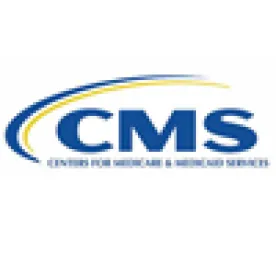The Centers for Medicare and Medicaid Services (CMS) has finalized Form CMS-10328 (the SRDP Form), a new OMB-approved information collection instrument that must be used by providers and suppliers utilizing the Stark Law Self-Referral Disclosure Protocol to resolve non-compliance under the Stark Law. The SRDP Form must be used for submissions made on or after June 1, 2017.
The new form creates several new changes to the SRDP including:
-
Separate submissions for the disclosing entity and each referring physician;
-
A formalized worksheet to calculate any refund owed to the government;
-
Requiring a numerical estimate of the “pervasiveness” of noncompliance; and
-
Less ability to argue technical noncompliance with the “group practice” definition.
It remains to be seen whether use of the SRDP Form will in fact assist CMS in expediting review and information gathering. In particular, it is unclear how CMS will evaluate disclosures involving noncompliant relationships within a physician practice without the benefit of a detailed analysis of the complex “group practice” definition. However, this standardized process may allow parties to assemble materials related to a self-disclosure more efficiently, particularly as they gain experience with the SRDP Form.
Section 6409 of the Patient Protection and Affordable Care Act (PPACA) mandated that CMS develop and implement a voluntary disclosure protocol that health care providers could use to disclose noncompliance with the Stark Law. On September 23, 2010, in response to this mandate, CMS implemented the Stark Law Self-Referral Disclosure Protocol (SRDP). Under the SRDP published at that time, parties were expected to assemble detailed narrative analyses of the potential scope of their liability under the law. These narrative disclosures allowed for inconsistent formats among disclosing parties, and frequently required multiple “supplemental disclosures” to be completed. For most disclosures submitted on or after June 1, 2017 the disclosing party must utilize the new SRDP Form. Disclosures that only involve a physician-owned hospital’s noncompliance with required website and advertisement disclosures are subject to special instructions.
The SRDP Form consists of (1) the SRDP Disclosure Form requiring information about the disclosing party, and (2) the Physician Information Form, requiring information about each physician involved in the noncompliance giving rise to the disclosure; and (3) a Financial Analysis Worksheet, which requires the disclosing party to provide the financial analysis of the potential overpayment in a specified Excel-compatible format, and (4) the Certification.
Of particular note, while the SRDP Form reduces the required narrative description of non-compliance and provides helpful examples (especially in the Financial Analysis Worksheet), it also forecloses certain arguments that disclosing parties may have utilized in previous SRDP submissions. For example, the SRDP Form expressly precludes disclosing party’s ability to argue that failures to meet the “in-office ancillary services exception” were due to technical deficiencies in their status as a “group practice” under 42 CFR § 411.355. The SRDP Form also requires the disclosing party to provide a numerical estimate of the pervasiveness of Stark Law noncompliance (for example, the percentage of non-compliant arrangements compared to all financial relationships with physicians).
Although use of the SRDP Form is mandatory, disclosing parties are permitted to submit an optional cover letter including information that the party believes may be relevant to CMS’s review.
Since its initial publication, the SRDP has been a viable option for health care providers to resolve outstanding liabilities and to mitigate potential penalties under the Stark Law. The SRDP has been a particularly important tool to report and refund Medicare overpayments related to actual or potential Stark Law noncompliance. However, final resolution and settlement can be a slow process, often taking several years. It is possible that CMS’s adoption of a more standardized process to evaluate SRDP filings will help the agency to resolve Stark Law non-compliance more quickly. For example, the agency appears to have tailored the Physician Information Form to focus on information CMS requires to assess whether other agencies, such as the HHS Office of Inspector General or Department of Justice, are separately investigating any physicians implicated in the disclosure.





 />i
/>i

